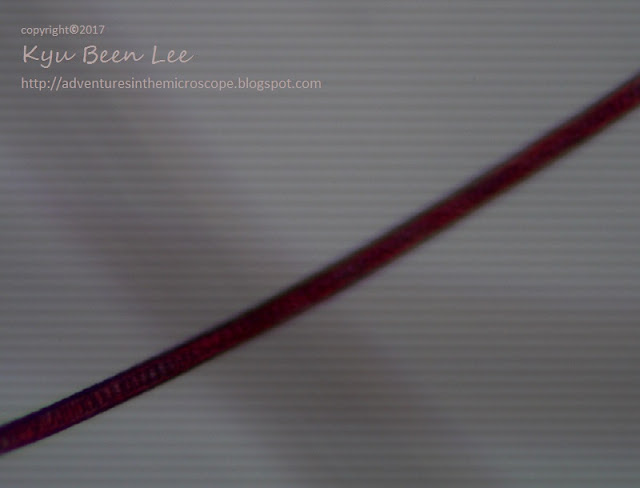| When wearing a pair of expensive yet comfortable ugg boots in the winter, have you ever wondered why the wool gives such warmth?  |
| ugg boots sheep wool 40X |
Turns out, Ugg uses a combination of wool and leather to form their clothing. I posted several descriptions on insulation and how wool or duck down efficiently conserve heat (the inner parts are empty, allowing heat to stay rather than be released). The pictures shown are the coiled wool from sheepskin taken from ugg boots.
 |
| ugg boots sheep wool 100X |
Seen here, the inner part consists of empty spaces where heat tends to become trapped in. The reason why a T-shirt made of thread isn't recommended in the winter is because threads don't have empty pockets inside of them to conserve the heat meaning it would simply diffuse out of them (T-shirts are also not recommended because they are short sleeved).
 |
| ugg boots sheep wool 400X |















































